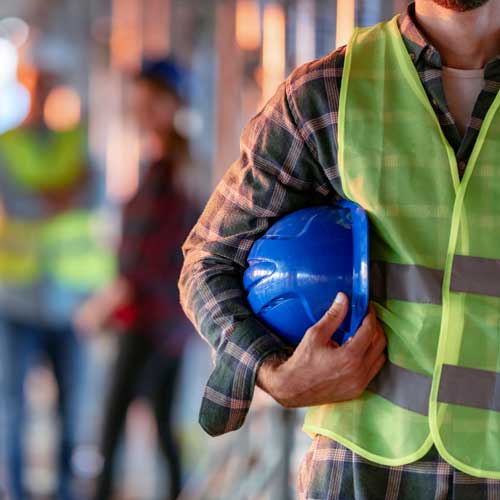Construction firms have a legal and ethical obligation to ensure the health, safety and wellbeing of their contractors. There are various steps construction leaders can take towards fulfilling this responsibility.
In the construction industry, fostering effective relationships with contractors is not just a practical requirement, but an ethical obligation as well. "The construction industry thrives on the partnerships between construction firms and contractors”, says Martin Parker, Head of Construction at Markel UK. “Health and safety on a construction site is of paramount importance to all parties involved."
This obligation is enshrined in law. "The most relevant piece of legislation that relates to health and safety on construction sites is the Construction (Design and Management) Regulations 2015 (CDM 2015)," says Parker. "CDM 2015 outlines roles and responsibilities for all parties involved in any construction project.”
According to the Health and Safety Executive, the aim of the CDM regulations is to help everyone working in the construction industry to:
- sensibly plan the work so the risks involved are managed from start to finish
- have the right people for the right job at the right time
- cooperate and coordinate work with others
- have the right information about the risks and how they are being managed
- communicate this information effectively to those who need to know
- consult and engage with workers about the risks and how they are being managed
“All contractors have a responsibility to take account of the health and safety risks to everyone affected by the work by planning and managing the measures needed to control them”, says Parker.
Implementing rigorous safety protocols is not an option; it’s a necessity, as Parker explains: "Ensuring the well-being of all parties involved is a non-negotiable priority with the provision of on-site welfare facilities being a fundamental requirement.”
To achieve this, he says, “Contractors on all projects must put procedures in place that provide appropriate supervision, information, and instructions to workers under their control. Given the hazardous nature of construction work, these protocols safeguard the workforce and mitigate the risks associated with accidents and injuries.”
Clear communication and effective management
Communication is at the heart of any successful partnership. "Construction firms must foster a collaborative culture where contractors are empowered to voice concerns. This creates an environment of mutual respect and accountability, and also reduces the likelihood of misunderstanding," emphasises Parker. The key here is continuous interaction. "Regular engagement is crucial, and all communication has to be clear and consistent," he adds.
Selecting and managing contractors demands a well-calibrated approach. "Effective contractor management processes require a mix of structure and flexibility. Clear selection criteria based on experience, expertise, and adherence to safety standards should be used," recommends Parker. Taking all these points into consideration “contributes to successful construction project outcomes and ensures quality standards are met”, on top of ensuring compliance with regulations and supporting contractors’ wellbeing, he notes.
The bigger picture
"These collaborative partnerships, underpinned by a continued focus on making every construction project a safe environment, will drive improvement in the standards of the construction industry as a whole," Parker points out.
To find out more about how to foster effective relationships in the construction industry, get in touch here.
